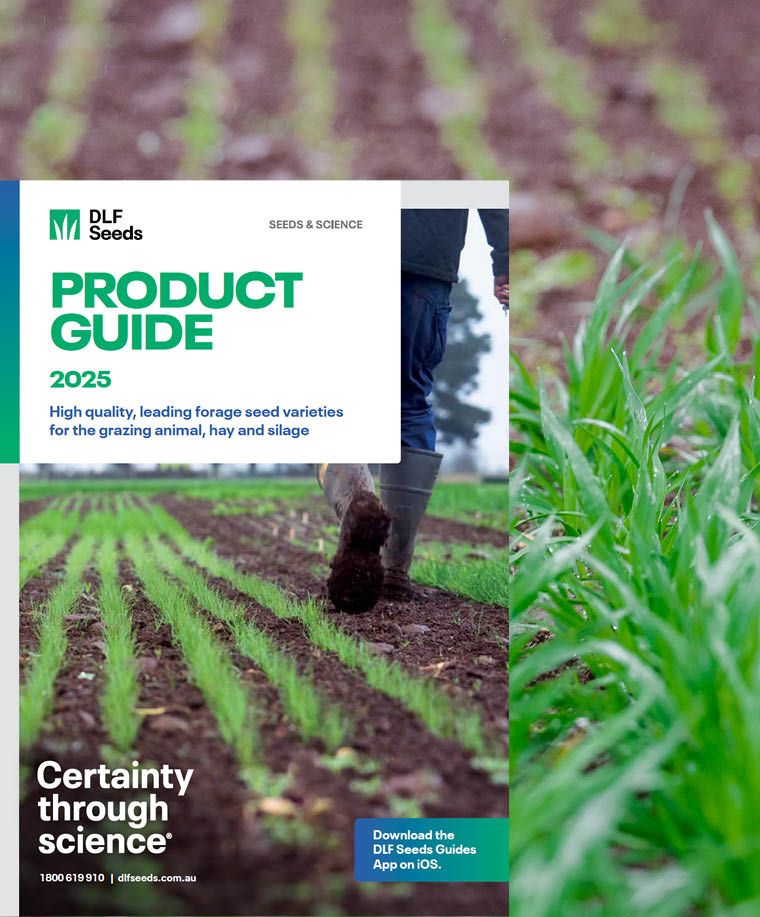Get in Touch
Contact Us
National team

Find Your Local Sales Agronomist
Flinders has demonstrated good performance when evaluated in field trials across a range of Australian locations for a number of years. Flinders is a late maturity, erect type oat with prolific tillering. Flinders has the ability to germinate and establish from early sowings into warm soil which is an important requirement for forage oat varieties.
Pasture seed sowing rate (sole): 80-110kg/ha
Flinders has high dry matter (DM) yield in both initial growth and regrowth. The DM yield is competitive with other forage oat varieties, such as Taipan, Comet and Wizard. Flinders is a late maturity forage oats, flowering a few days earlier than Taipan. The ability to germinate and establish with early sowings into warm soil is an important requirement for forage oats varieties. From the overseas laboratory tests and Australian field tests conducted to test warm soil emergence, Flinders has shown good germination and establishment, equal to that of Taipan.
Flinders has shown strong resistance to crown rust in all the Palafor Partners field trials and in multi-race glasshouse inoculation testing conducted by Sydney University in 2014. In the 2016 testing, it scored highly resistant in the seedling inoculation tests and in the adult plant field screening test. It was included in the Cobbitty 2017 testing and was once again highly resistant to all races used in the test.
Flinders is best sown at a depth of 30-60mm to ensure strong establishment through good seed to soil contact as well as the seed being sown in soil with good moisture. The sowing depth is important so that if the crop is to be grazed, the plants root down correctly and are not “pulled” easily by grazing of sheep or cattle. Sowing oats at the correct depth also minimises the potential for the crop to lodge, which can happen later in the growing season when high winds are present.
The use of press wheels at the time of sowing is important to ensure even seed placement at the required sowing depth. Not using press wheels can cause the depth to vary with some seed actually left on the soil surface which exposes it to dry conditions and/or bird attack.
Row spacing is not often considered when sowing a cereal crop in a pasture system, but there are some key steps to gain the best results. Sowing row width should not be any greater than 20cm (8 inches). This will optimise available moisture (especially for early growth), provide good ground cover to supress weeds and ultimately gain the highest potential hay/silage yield.
Sowing width also helps to ensure you have enough plant crowns to adequately hold the wind rows off the ground for hay production. This will ensure you have good air flow and therefore an even drying period before baling. This also reduces the risk of staining, which can cause the hay to be spoiled.
Cereal grazing serves two purposes; the use of green feed at a time when available feed is generally low and increasing the yield potential by encouraging more tillers and greater root growth. The utilisation of green feed early in the season allows for a longer rotation and therefore allowing for longer resting times for other pastures, especially the perennial pastures which can take longer to reach adequate dry matter yields for grazing. Increased yield potential is important given that cereals are only a short term option. The reason why cereals generally produce more feed when grazed is because the shock of the grazing forces the plant to produce secondary tillers as well as secondary roots. The more tillers produced, the higher the potential for more dry matter to be grown.
It is important to ensure that grazing is not too low into the crown of the plant and to allow some leaf area to be left behind which allows the plant to recover quicker.
Time of grazing should cease once the day length and day time temperatures are increasing and general daily growth rates are increasing. The timing for this is late winter into very early spring, which should also coincide with the growth rates of the other pasture crops/paddocks increasing in daily dry matter production and therefore meet the increasing requirement of the livestock production system. It is also important to monitor soil moisture as this will have a large impact on the final yield potential of any hay or silage crop.
Minimum 500mm rainfall per annum unless irrigated
